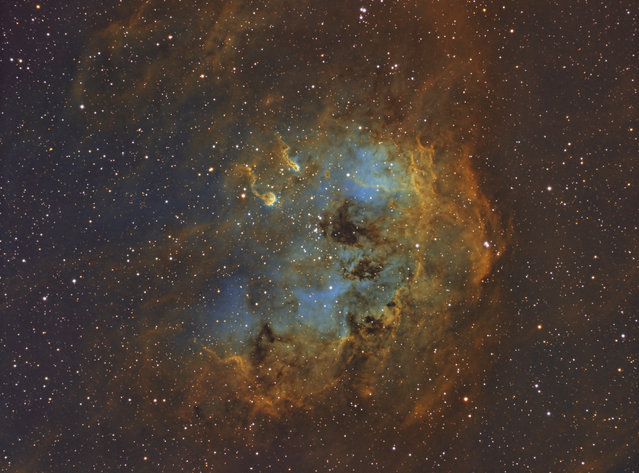
IC410 is a emission nebula in the constellation Auriga. It is apromimatly 12,000 light years away. Partly obscured by foreground dust, NGC 1893 a young cluster of stars energizes the glowing gas. (Photo and caption by Bill Snyder)
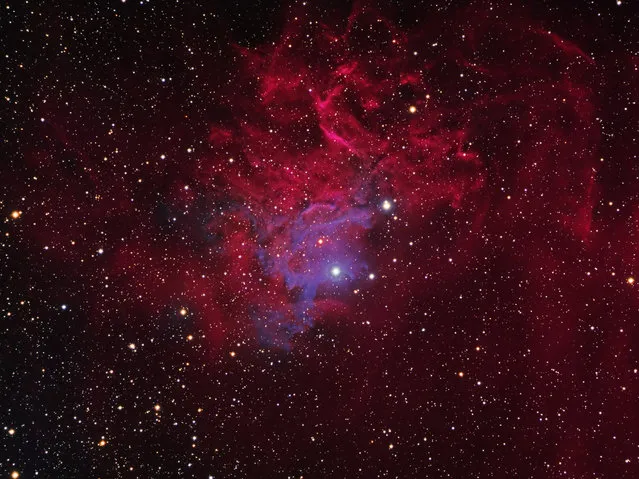
IC405 also known as the Flaming Star Nebula, SH 2-229, is an emission/reflection nebula in the constellation Auriga, surrounding the bluish star AE Aurigae. It shines at magnitude +6.0. Its celestial coordinates are RA 05, 16.2 Dec +34° 28′. It surrounds the irregular variable star AE Aurigae and is located near the emission nebula IC 410. The nebula measures approximately 37.0′ x 19.0′, and lies about 1,500 light-years from Earth. The nebula is about 5 light-years across. (Photo and caption by Bill Snyder)
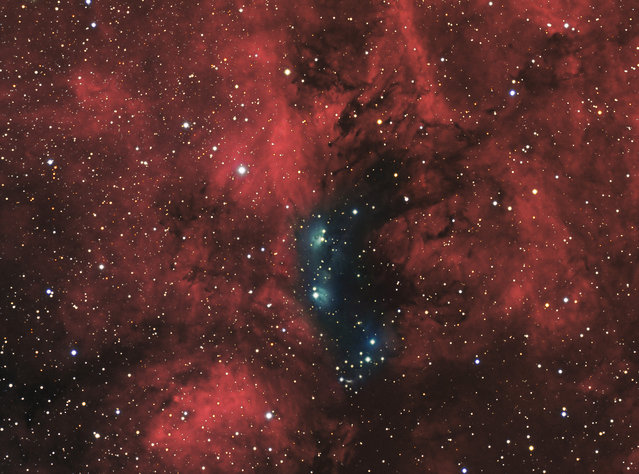
A dramatic study in contrasts, this colorful skyscape features stars, dust, and glowing gas in NGC 6914. The complex of nebulae lies some 6,000 light-years away, toward the high-flying northern constellation Cygnus and the plane of our Milky Way Galaxy. With foreground dust clouds in silhouette, both reddish hydrogen emission nebulae and dusty blue reflection nebulae Ultraviolet radiation from the massive, hot, young stars of the extensive Cygnus OB2 association ionize the region’s atomic hydrogen gas, producing the characteristic red glow as protons and electrons recombine. Embedded Cygnus OB2 stars also provide the blue starlight strongly reflected by the dusty clouds. (Photo and caption by Bill Snyder)
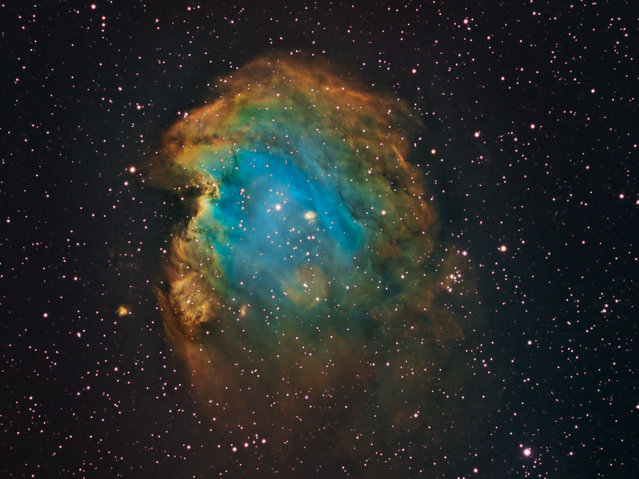
NGC2174 the Monkey Head Nebula in the constellation Orion is 6400 light years from Earth. This is an emission nebula surrounding star cluster NGC2174. (Photo and caption by Bill Snyder)

Sh2-86 is an emission nebula in the constellation Vulpecula, it surrounds the open star cluster NGC6823. Open cluster NGC6823 is about 50 light years across, and is about 6000 light years from Earth. (Photo and caption by Bill Snyder)
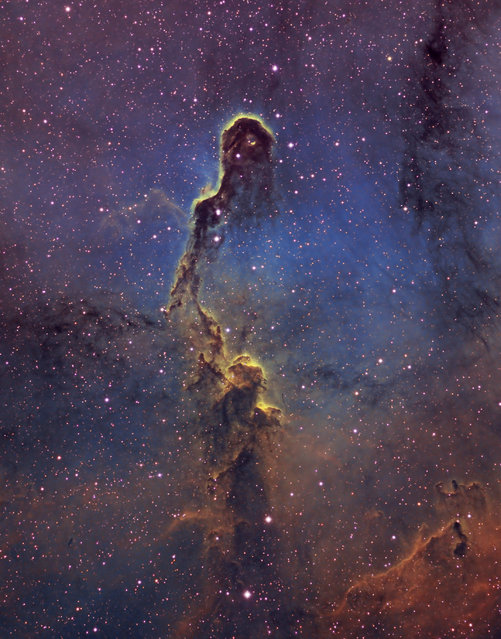
IC1396 The Elephant Trunk Nebula in the constellation Cepheus, it is approximately 2400 light years from earth. This image is part of a larger region of nebulosity and star cluster IC1396. (Photo and caption by Bill Snyder)
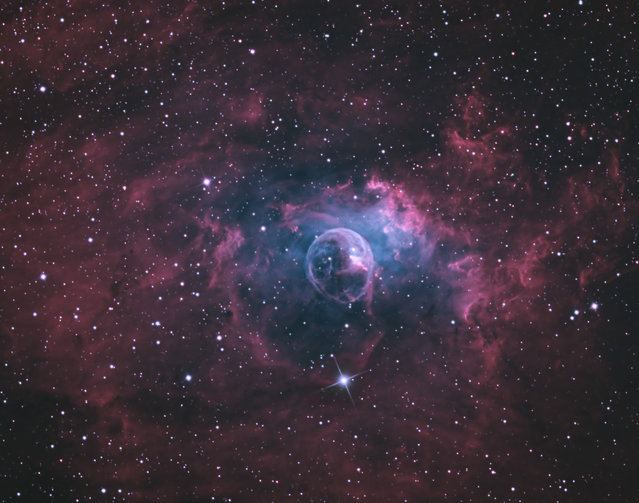
NGC7635 The Bubble Nebula also known as Sharpless 162, and Caldwell 11, is approximately 7800 light years from earth. It is about 6 light years in diameter. NGC7635 lies in the constellation Cassiopeia. The powerful stellar winds from a Wolf-Rayet Star create the sphericial bubble. A Wolf-Rayet Star is an unusually powerful star, discovered by astronomers Charles Wolf and Georges Rayet. (Photo and caption by Bill Snyder)
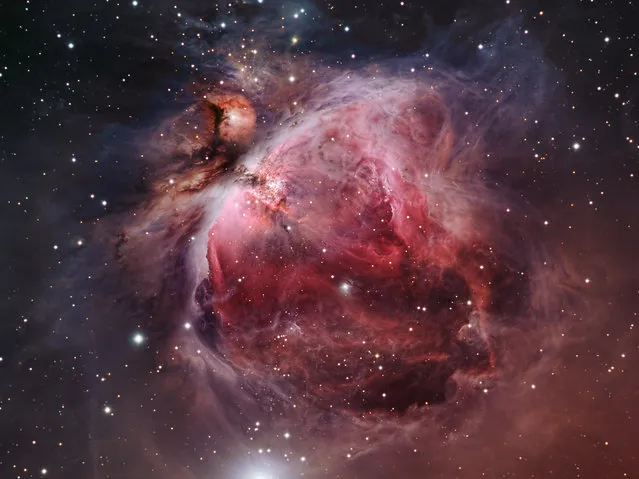
M42 is an emission and reflection nebula in the constellation Orion it is approxmiatly 1350 lights years from Earth. It is about 25light years accross. The Orion Nebula is an example of a stellar nursery where new stars are being born. The Nebula is part of a much larger nebula that is known as the Orion Molecular Cloud Complex. The nebula is visible with the naked eye, even from areas affected by some ligh pollution. It is seen as the middle “star” in the sword of Orion, which are the three stars located south of Orion’s Belt. (Photo and caption by Bill Snyder)
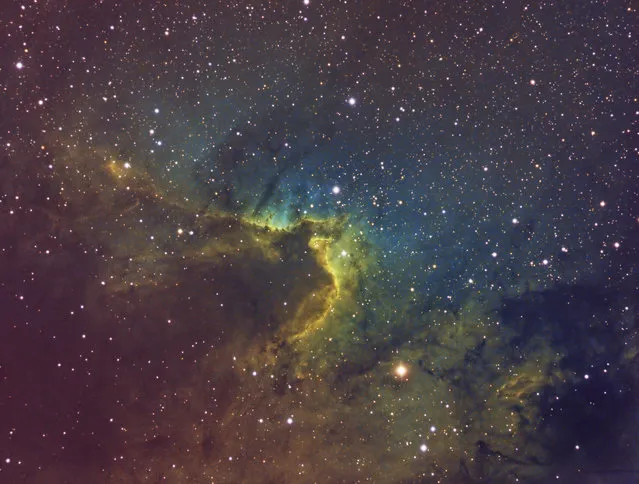
The Cave Nebula Sh2-155 or Caldwell 9, is in the constellation Cepheus. It is approxmiatly 2400 light years away, and 35 light years across. It is a dim, and diffuse bright nebula, within a larger nebula complex containing reflection, emmison, and dark nebulosity. (Photo and caption by Bill Snyder)
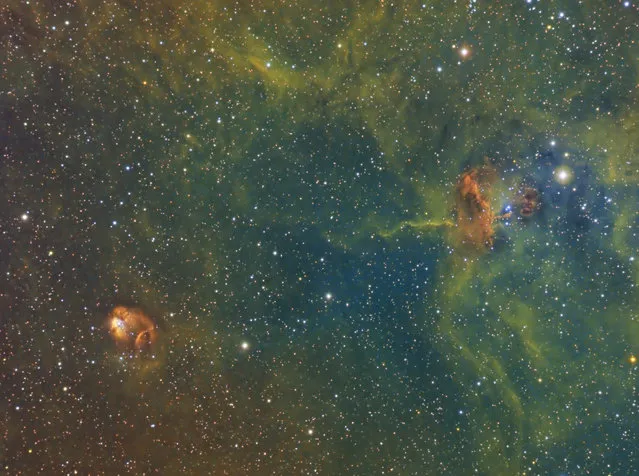
IC417 and NGC1931 are in the constellation Auriga aproxmatily 10,000 light years from earth. They are both young star clusters still embeded in glowing hydrogen gas and dust. The apparent diameter of NGC1931 is 3 arcminutes the apparent diameter of IC417 is 13 arcminutes. These are both emission and reflection nebulas. (Photo and caption by Bill Snyder)
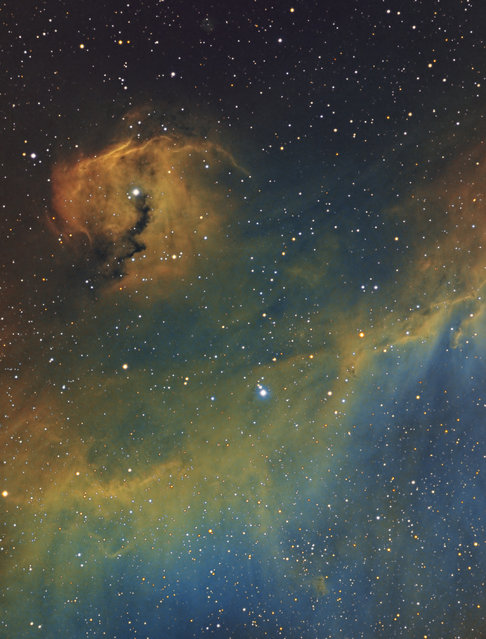
IC2177 the Seagull Nebula is in the constellation Monoceros, and is approximately 3600 light years away. This also includes NGC 2327 a compact, dusty emission region with an embedded star that forms the bird’s head also known as the Parrot Nebula. (Photo and caption by Bill Snyder)
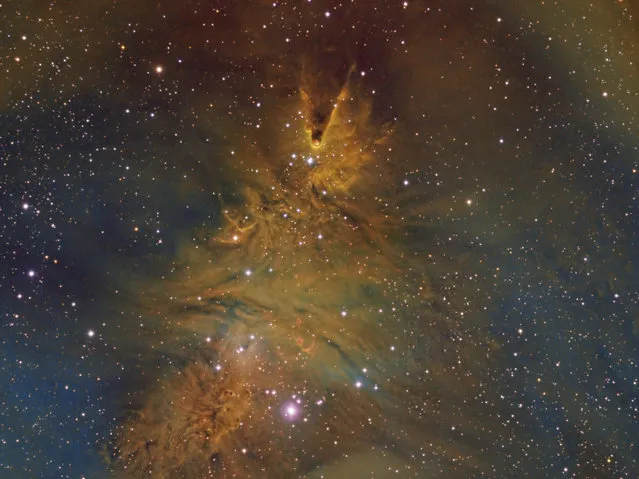
NGC2264 the Cone Nebula in the constelliation Monoceros NGC2264 refers to both objects the Cone Nebula and the Christmas Tree Cluster. Also in this image is the Fox Fur Nebula. All the objects are aproximatly 2600 light years from earth. (Photo and caption by Bill Snyder)
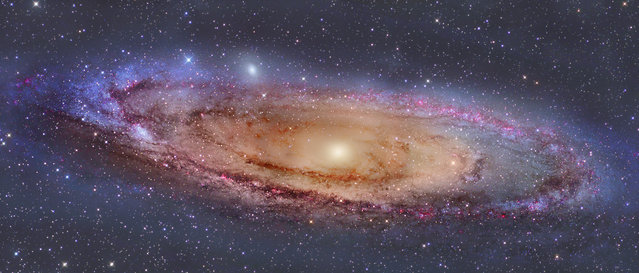
M31 in the constellation Andromeda is approximately 2.5 million light years away. It is the nearest spiral galaxy to our Milky Way Galaxy, but not the closest galaxy. M31 is expected to collide with our own galaxy in about 3.75 billion years. (Photo and caption by Bill Snyder)
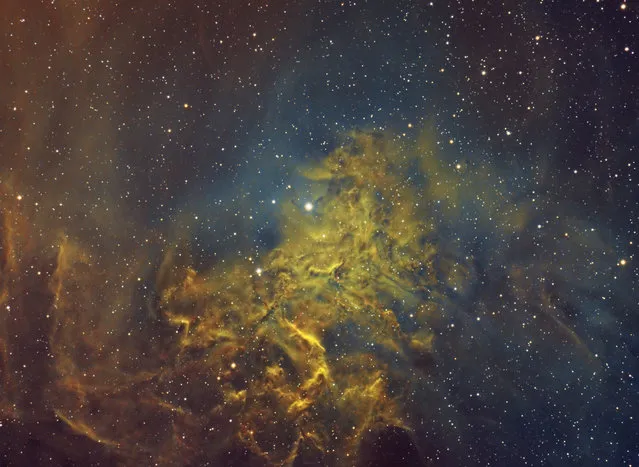
IC405 also known as the Flaming Star Nebula, SH 2-229, is an emission/reflection nebula in the constellation Auriga, surrounding the bluish star AE Aurigae. It shines at magnitude +6.0. Its celestial coordinates are RA 05h 16.2m dec +34° 28′. It surrounds the irregular variable star AE Aurigae and is located near the emission nebula IC 410. The nebula measures approximately 37.0′ x 19.0′, and lies about 1,500 light-years from Earth. The nebula is about 5 light-years across. (Photo and caption by Bill Snyder)
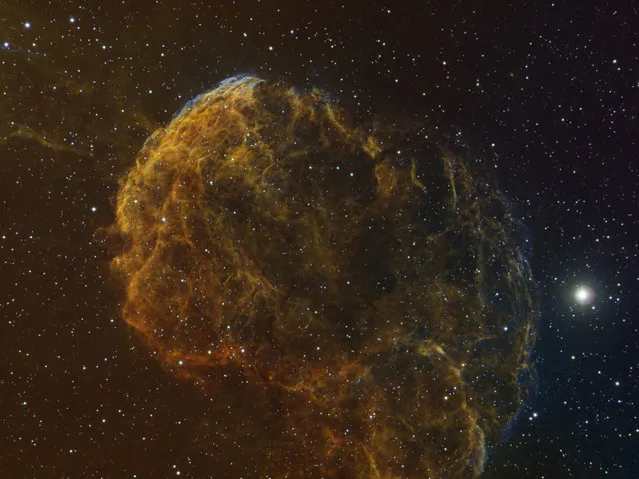
IC443 the Jellyfish Nebula, also known as Sharpless 248 is in the constellation Gemini. It is a supernova remnant that could have occurred 3000 to 30,000 years ago. It’s approximately 5ooo light years from earth. IC443 is about 70 light years across. (Photo and caption by Bill Snyder)
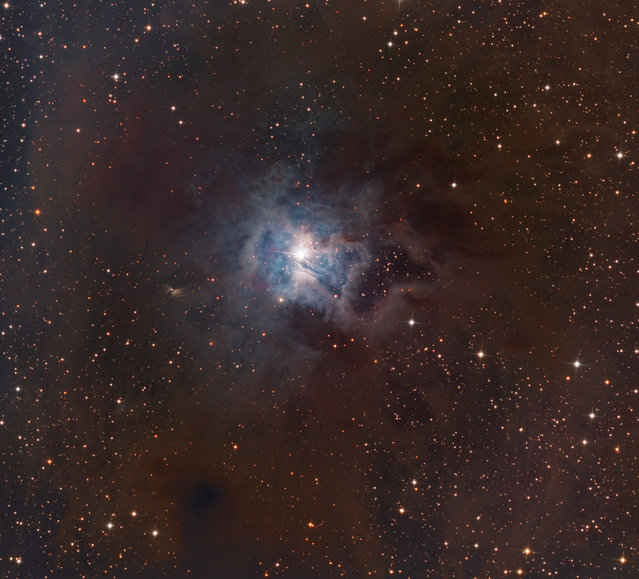
NGC7023 the Iris Nebula is bright reflection nebula in the constellation Cepheus. It is aproxmatly1300 light years away and 6 light years across. NGC7023 is the cluster inside the nebula. The nebula is illuminated by a +6.8 mag star SAO19158. (Photo and caption by Bill Snyder)
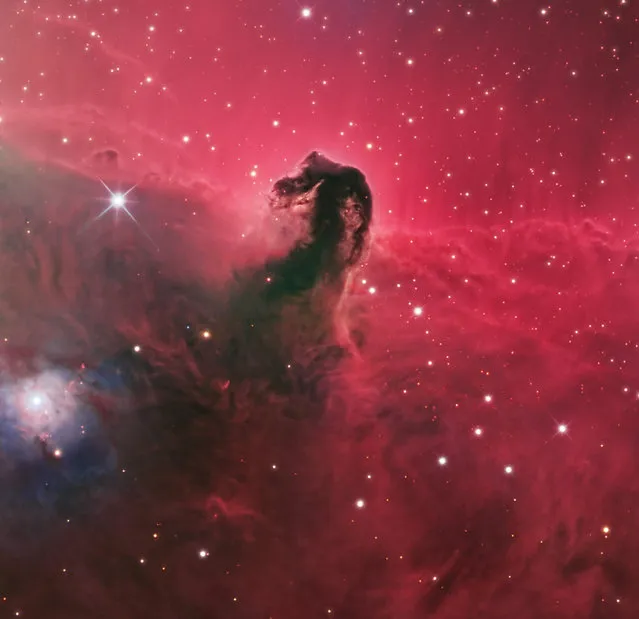
IC434 The Horsehead Nebula is approximately 1500 lightyears from Earth in the constellation Orion. The Horsehead it self, is a dark nebula surrounded by emission nebula. The reddish glow surrounding the dark dust clouds of the horsehead is hydrogen gas ionized by the bright star Sigma Orionis. Bright spots in the Horsehead Nebula’s base are young stars just in the process of forming. (Photo and caption by Bill Snyder)
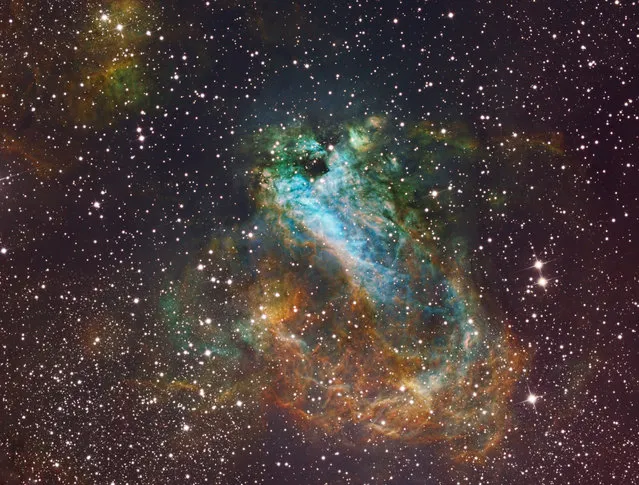
M17 the Swan Nebula also known as the Omega Nebula lies in the constellation Sagittarius. This is an emission nebula, and is about 5500 light years from Earth. The total field of nebulosity is approximately 40 light years in diameter. (Photo and caption by Bill Snyder)
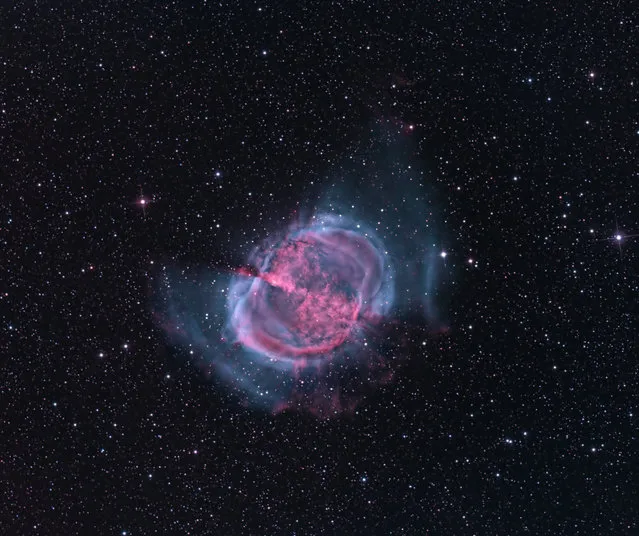
M27 Dumbbell Nebula also known as NGC6853 is in the constellation Vulpecula. It is approximately 1360 light years from Earth. It is about 8 x 6 arcminutes in size and an apparent magnitude of 7.5 This is a easily visible target in Binoculars and amateur telescopes. M27 is composed of the gas ejected from a dieing star. The remains of this star, is the white dwarf at the center if the object. All the expanding gas and dust in this image was inside that star. (Photo and caption by Bill Snyder)
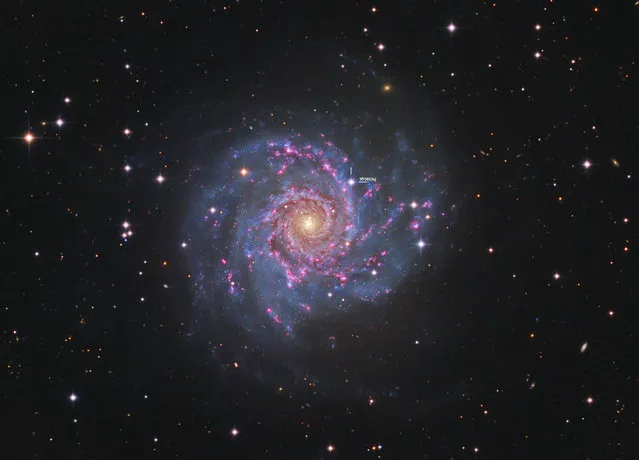
Messier 74 (also known as NGC 628) is a face-on spiral galaxy in the constellation Pisces. It is at a distance of about 32 million light-years away from Earth. The galaxy contains two clearly defined spiral arms and is therefore used as an archetypal example of a Grand Design Spiral Galaxy The galaxy’s low surface brightness makes it the most difficult Messier object for amateur astronomers to observe.However, the relatively large angular size of the galaxy and the galaxy’s face-on orientation make it an ideal object for professional astronomers who want to study spiral arm structure and spiral density waves. It is estimated that M74 is home to about 100 billion stars. Text taken from Wikipedia Check out the full version of this image below as there are many background galaxy’s. (Photo and caption by Bill Snyder)
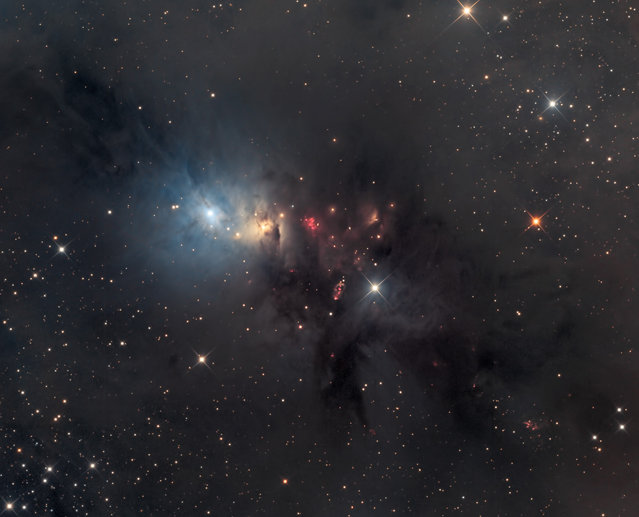
NGC1333 Is a dark and dusty reflection nebula in Perseus. It is approximately 1000 light years from Earth. There is much going on in NGC1333. In this dark and dusty Nebula there is also Emission and Reflection Nebula. There is new star formation with most of the stars being less than 1,000,000 years old. That’s very young for a star, considering our sun is 4.5 billion years old now. NGC spans about 6 light years across. (Photo and caption by Bill Snyder)
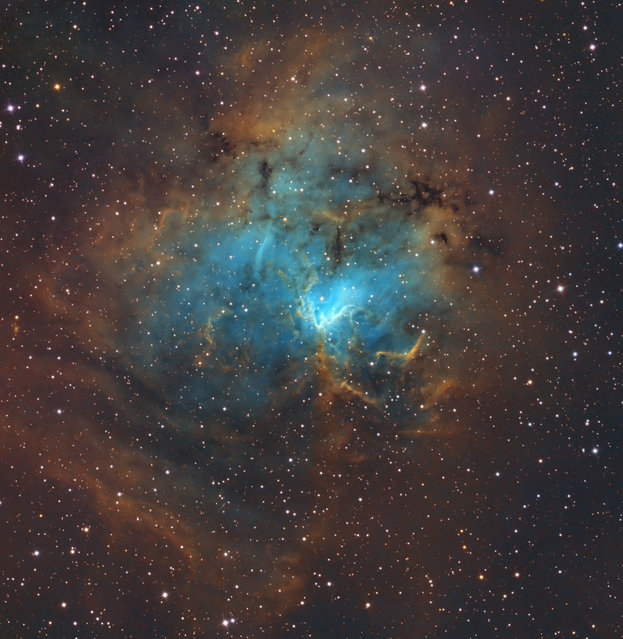
NGC1491 is an emission nebula in Perseus. It is about 10,000 light years away. (Photo and caption by Bill Snyder)
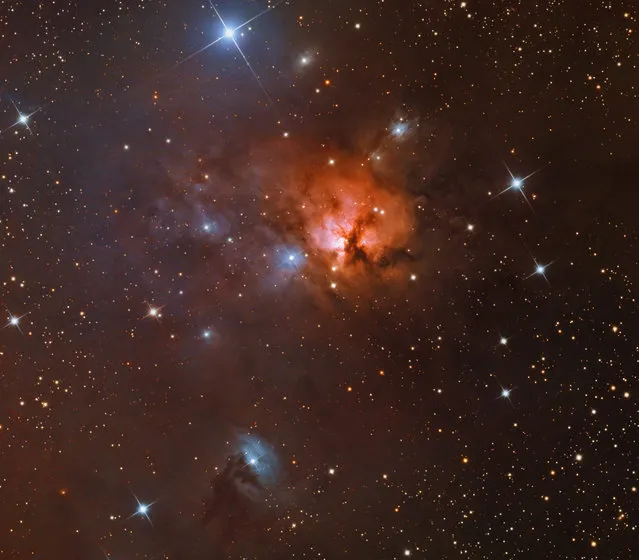
Colorful NGC 1579 resembles the better known Trifid Nebula, but lies much farther north in planet Earth’s sky, in the heroic constellation Perseus. About 2,100 light-years away and 3 light-years across, NGC 1579 is, like the Trifid, a study in contrasting blue and red colors, with dark dust lanes prominent in the nebula’s central regions. In both, dust reflects starlight to produce beautiful blue reflection nebulae. But unlike the Trifid, in NGC 1579 the reddish glow is not emission from clouds of glowing hydrogen gas excited by ultraviolet light from a nearby hot star. Instead, the dust in NGC 1579 drastically diminishes, reddens, and scatters the light from an embedded, extremely young, massive star, itself a strong emitter of the characteristic red hydrogen alpha light. (Photo and caption by Bill Snyder)

NGC 3576 contains several clusters as star propagation has progressed sequentially east to west during the last several million years. The bright emission component extends some 100 light years across and contains scattered small dark nebulae known as Bok Globules. Bok Globules are dense well defined concentrations of gas and dust named after the Dutch astronomer Bart Bok (1906-1983) who first defined them. Typically they possess 10 to 50 solar masses within a space of a single light year. Most commonly found within HII regions they are known to be cocoons of star formation, particularly the formation of double or multiple star systems. (Photo and caption by Bill Snyder)
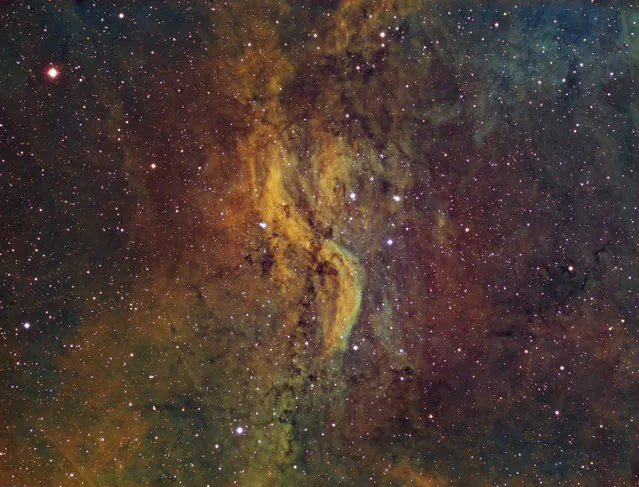
DWB-111 Propeller Nebula is an emission nebula in the constellation Cygnus. The Propeller Nebula is actually part of a much larger nebular complex which are common in this area of the sky. The Proprller Nebula is compised of Ha and some SII very little OIII is avaiable. There is very little known about this object, distance to this object or the source of excitation is unknown. (Photo and caption by Bill Snyder)

The Cygnus Wall is in the southern area of NGC7000 also known as the North America Nebula. It is approximately 1800 light years from Earth, and is in the constellation Cygnus. The Wall is an energized shock front and contains the most concentrated star formations in the nebula. The size of the North America Nebula is about 4 full moons. (Photo and caption by Bill Snyder)
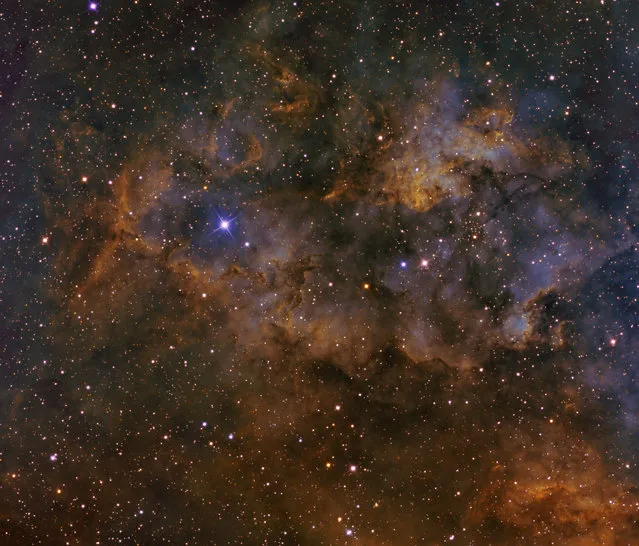
Sh2-115 is an emission nebula in the constellation Cygnus. It is approximately 7500 light years away. The open star cluster in this is known as Berkeley 90. This object is located about 2.5 degrees Northwest of the bright star Deneb. (Photo and caption by Bill Snyder)
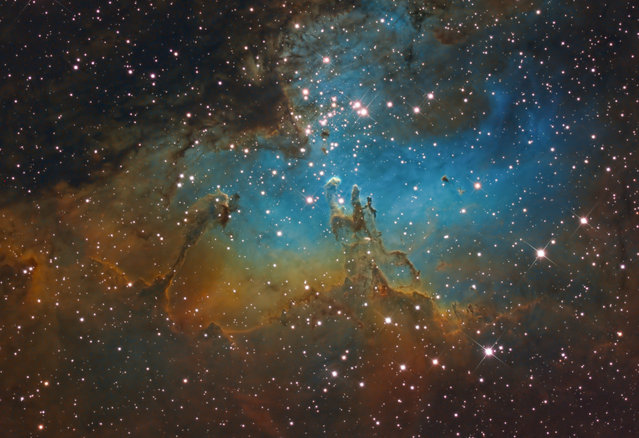
M16 is in the constellation Serpens. This is approximately 7000 light years from earth. There is a young star cluster surrounded by a emission nebula composed of interstellar dust. The cluster is referred to as NGC6611. This is a very active star forming region. (Photo and caption by Bill Snyder)
30 Oct 2013 09:15:00,
post received
0 comments
